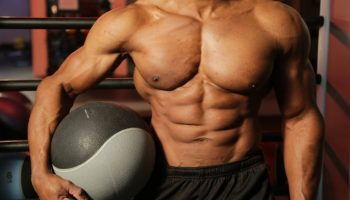Soy protein powder is a popular supplement today, especially among the vegetarians and the vegans.
While many of us continue to enjoy the benefits of ‘soy’, do we really know the details like soy protein content or soy protein ingredients, which keeps us in shape.
Being a fitness enthusiast, just knowing the listed benefits is not enough. I am persistent to know more about the facts. This includes specific points like what is soy protein, how is soy protein made, the soy protein content, etc.
What is the point of being a fitness champion without knowing the science of the supplements like soy protein, we so often consume? After all, we are looking for sustainable solutions, right? Why I am taking soy protein is okay, but what is soy protein? Let us dig in more to stay in shape forever.
What is Soy Protein
Let me put the basics in front of you again.
To say exactly what is soy protein, well, it is protein extracted from a plant (legume) source-soy bean. To put in in quick perspective for the workout specialist, it is another rich source of protein, a non-meat product, with lots of protein content and less fat and cholesterol.
The fact that it a protein powder which is both vegetarian and vegan, makes it an even more friendly choice for lots of people. But, do you know why soy protein powder is vegan?
Similar Article: 9 Benefits of Soy Protein for your Health and Fitness
How Soy Protein is made

I now take you into the world of how soy protein is made. We know the source is the legume soy bean, but how it is further processed to create the effective protein powder-the soy protein-for bodybuilders is what we discuss now.
Let us find more about how soy protein is made.
The first step is to extract or isolate soy protein from soybean or the soybean meal. A soybean meal is prepared through dehulling and defatting soybeans, to isolate soy protein.
Dehulling is a process in which the outer layer of the soybean flakes is removed to be further processed into the key soy protein ingredients, called soy flour, soy concentrates and soy isolates.
Defatted soybeans, on the other hand, is the removal of fatty acids from the soybeans flakes to be processed into the main soy protein content or soy protein ingredients. The process of removing fatty acids involves washing the flakes in alcohol or water to remove sugar and dietary fibre.
By far, it is the soy protein isolate which is the most preferred by the workout specialists. It is because soy protein isolate is made from defatted soybean flakes.
Soy flour, one of the soy protein ingredients, is a viable meat alternative and a dependable soy protein content source for lactose-intolerant people since it is used for dairy products too. Soy flour is prepared by milling soybean flakes. These flakes, in turn, are full of soybean oil fat or are defatted by removing the soybean oil.
So, soy flour can either be fat-free or with full fat. The particle size of soy flour will differ depending upon its source of preparation. Like in case of full-fat, the soy flour may appear rougher, in soy grits form. While further processing of soy flour may result in fine texture or ultra-thin particles size.
The textured soy protein concentrate is prepared using defatted soybean flakes. First, water is added to the flakes, after which it is heated and pressure is exerted to release the ground-flour. The released portion is then cut and baked to form texture.
Soy Protein Content
We know what is soy protein and how is soy protein made and now, we shall focus on soy protein content or the soy protein ingredients.
Why we need to know the soy protein ingredients is because it is natural for us to read the nutrition facts before we buy the next supplement on the shelf. Even if it means a lot of protein, we need to know the ingredients of the supplement we buy. So here we are.
Soy protein isolate is the purest form of protein with 90% soy protein content. It has no fats and carbs and has a neutral flavour. It is fine-particle protein powder and a great nutritional source, commonly used in protein bars, protein shakes or cereals and baked goods.
Soy protein texture is a derivative of soy protein concentrate, available in form of dry flakes or chunks. It has around 70% soy protein content. It is the most versatile form of soy protein content as it can be low-fat, full-fat and defatted. It is commonly used as a protein enhancer by mixing the powder in baked goods.
The concentrate is soy protein content without water-soluble carbs and has about 70% protein. It has about 25% dietary fibre. This soy protein ingredient is used to up the protein value of any food product. It also reduces the fat levels.
Related Article: Soy vs Whey Protein: What’s the Difference
Which one to choose?
Given the choice of soy protein ingredients, it is simple to use soy protein content in many forms. However, for the bodybuilders, it is still the soy protein isolate which calls the shots.
Why you should prefer soy protein content is evident from the fact that it has 90% protein value. It is a good idea to rotate the protein supplements and get maximum nutrition from the various supplement we have access to. The fact that soy protein content is concentrated and that it is low in saturated fats or carbs is promising.
Another interesting fact attached to soy protein is its amino acid content. Soy protein contains glutamine and arginine. Glutamine is effective to reduce the metabolic stress and arginine promotes muscle anabolism, in short, helps build muscles.
It is the time we develop a multi-protein supplement schedule and intake maximum nutrition to make us fit. So, what is next for you, is it still just whey or soy is in now? Let us know what you think.







